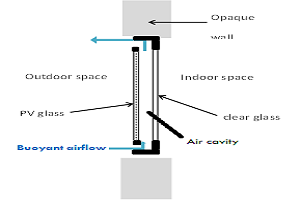
Tin-Tai Chow
City University of Hong Kong, Hong Kong SAR, China
Title: Building Integrated Active and Passive Solar Design
Biography
Biography: Tin-Tai Chow
Abstract
The interest in zero carbon building developments is increasing year by year. This makes it important to maximize the renewable power outputs and thus favors the use of hybrid generating systems. Combined active and passive solar design is an evolving science in building technology. Traditionally, building facade is one crucial element in architecture. Nowadays, it has escalating importance in services engineering owning to its significant influence on the engineering system performance and energy use. Building integrated solar devices may be installed either at the building façade or on the roof. The system can be designed as invisible, aesthetically appealing, or appearing as an architectural concept. Advances in the development of multi-functional photovoltaic/thermal (PV/T) facades may provide an important stimulus for architectural expression. On the other hand, the design of extensively-glazed building is a world-wide architectural trend. At this end, the PV ventilated glazing technology offers substantial energy saving opportunities through air conditioning load reduction, more favorable daylight penetration, and solar energy utilization. On the other hand in the liquid-flow window option, a thermosyphon-induced liquid stream flows within the cavity to the heat exchanger for feed water pre-heating. The building integrated active and passive solar designs then ask for the consideration of all building components and services systems at one shot, well at the project commencement stage. In other words, site planning, aesthetic design, system equipment and construction material selection, financing, construction, commissioning, and long term operation and maintenance have to be well coordinated. These become alternative challenges to be overcome.

